Certain sectors of society have been complaining about the subject matter in video games long before maniacs like Jack Thompson ran wild on the industry, taking everyone short of Disney to court (even so, Mickey, watch your back). They ranted and raved, appearing on television to inform the masses of how video games were corrupting our children. Most people dismissed them as obsessive extremists, and video games marched on, further developing technology to offer more realistic experiences.
 One could perhaps say that the level of realism offered by video games was almost its undoing. Things came to a head in 1993 when two Democratic senators, Joseph Lieberman of Connecticut and Herbert H. Kohl of Wisconsin called for a series of hearings to look into the subject of violence in games. The joint Senate Judiciary and Government Affairs Committee hearings on video game violence began on December 9th, 1993, with several well-known industry figures testifying. Basically a battle of words between those seeking to censor games and those seeking to keep the government out, the hearings reached a heated climax when then-Nintendo executive vice president Howard Lincoln and Sega vice president Bill White had a heated exchange that left the Senate panel dumbfounded. The two companies highest on the food chain were at each other’s throats, and it was only at this point that Congress finally realized how big video games had become.
One could perhaps say that the level of realism offered by video games was almost its undoing. Things came to a head in 1993 when two Democratic senators, Joseph Lieberman of Connecticut and Herbert H. Kohl of Wisconsin called for a series of hearings to look into the subject of violence in games. The joint Senate Judiciary and Government Affairs Committee hearings on video game violence began on December 9th, 1993, with several well-known industry figures testifying. Basically a battle of words between those seeking to censor games and those seeking to keep the government out, the hearings reached a heated climax when then-Nintendo executive vice president Howard Lincoln and Sega vice president Bill White had a heated exchange that left the Senate panel dumbfounded. The two companies highest on the food chain were at each other’s throats, and it was only at this point that Congress finally realized how big video games had become.
To think, all of this controversy supposedly started because Lieberman’s chief of staff Bill Andreson was curious about the content of Mortal Kombat, which his son desperately wanted. Some quick investigation revealed a game filled with blood and gore, and the crusade was on. Their curiosity set off a change of events that ultimately made Sega millions, left Nintendo’s image bruised, and gave a terribly mediocre FMV game more fame than it ever deserved.
Sega Takes Action
Sega wasn’t stupid when it came to the subject of violence in their games. Since the Genesis had launched, the publisher had been watchful that a certain level of responsibility be taken by its licensees but never really took an active role in setting specific standards for content. There was no need for it to “police” other publishers, as everyone was, to a degree, conscious of what was and wasn’t permitted. For instance, Razorsoft covered up the naked fairies in its Genesis port of Stormlord. By some accounts, Razorsoft was pressured into censuring the game by Sega, though this has been contested (former Stormlord programmer Kevin Seghetti has argued that it was strictly a voluntary action). Whatever the case, the game was not left intact when it arrived on the Genesis in 1990. No real attempts at censorship were ever taken by Sega, other than requiring a disclaimer on the packaging of games with questionable content. Even then, they weren’t entirely consistent. For example, whereas Splatterhouse 2 had the following message: WARNING: This game contains scenes depicting violence which may not be suitable for younger players on its cover, other violent titles like Slaughter Sport and Pit Fighter did not. Coincidentally, one of the titles responsible for all the controversy in the first place, Night Trap, did have a warning label on its cover clearly stating that it was not suitable for young children.
Sega was more liberal than Nintendo, which had certain, specific standards to which all games had to adhere. This was the only way to get Nintendo’s seal of quality: you either made the changes it required, or your game was not released. This is the reason why the notorious SNES version of Mortal Kombat lacked the blood and fatalities of its Genesis counterpart. Acclaim actually told Nintendo that the Genesis version would ship intact, and that censoring the SNES game would not be a wise move. Nintendo demanded the changes anyway (and we all know how well that turned out, sales-wise).
Even with Nintendo’s oversight and Sega’s unwritten rules, video games were still under immense scrutiny by watchdog groups like the Children’s Television Resource and the National Coalition on Television Violence. To relieve the pressure, Sega decided to introduce a game rating system. In 1993, the company approached the motion picture industry in hopes of utilizing that rating system for its Genesis and Sega CD games. When the industry refused, Sega moved ahead on its own and created the Video Game Ratings Council, which emulated the movie rating system. It was hoped that this would quell the increasing sentiment that there wasn’t enough being done on the part of game companies to ensure that younger gamers were not being exposed to sex and violence in their products. The VGRC used a simple, albeit imperfect system for rating games:
Like today’s ESRB system, the VGRC ratings were only guidelines, not ironclad law. Parents could still opt to ignore them, and stores were not obligated to enforce them. Regardless, the system was an important first step towards the self-regulation that Congress was pushing for. Just as comic books and the movie industry had been forced to adopt their own forms of regulation in the ’50s and ’60s, so would the gaming community be forced to act to keep would-be censors at bay.
The Industry Looks Elsewhere
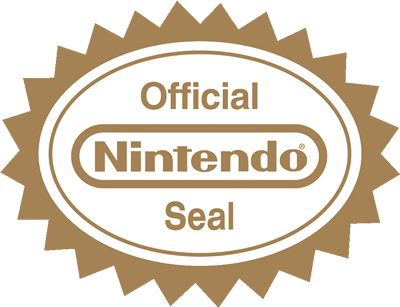 Initially, Sega was applauded for its actions. As the first hardware manufacturer to adopt a ratings system, it had taken action that others were unwilling to emulate. Nintendo was especially resistant, relying on its own internal guidelines. Many speculate that the House of Mario had an unfair advantage in that it manufactured its own cartridges and could thus “cut off” any unruly publisher that refused to adhere its rules. Nintendo also had a written rule of only allowing companies to publish two games per year, which gave it strict control over its licensees and little reason to implement a ratings system. Sega, on the other hand, was not so controlling and was lauded by industry insiders for the VGRC, but many on the outside began to think it was more of a marketing gimmick than a sincere gesture.
Initially, Sega was applauded for its actions. As the first hardware manufacturer to adopt a ratings system, it had taken action that others were unwilling to emulate. Nintendo was especially resistant, relying on its own internal guidelines. Many speculate that the House of Mario had an unfair advantage in that it manufactured its own cartridges and could thus “cut off” any unruly publisher that refused to adhere its rules. Nintendo also had a written rule of only allowing companies to publish two games per year, which gave it strict control over its licensees and little reason to implement a ratings system. Sega, on the other hand, was not so controlling and was lauded by industry insiders for the VGRC, but many on the outside began to think it was more of a marketing gimmick than a sincere gesture.
There was good reason for skepticism, as what exactly constituted the VGRC was never publicly disclosed by Sega. There were several key areas in which the system was flawed, thereby reducing its effectiveness:
- It was unclear how games were rated. No one knows who sat on the council or what criteria they used to evaluate each game.
- There was no consistency in the ratings. Some games were given an MA-17 rating, while others with the same type of content were issued MA-13 ratings. Mortal Kombat was one such example. The Sega CD version, which required a code to reduce the amount of gore, was labeled MA-17. The Genesis version was published with an MA-13 rating. Both were the essentially the same game, with only minor changes achieved only through entering specific codes.
- The rating system was not clearly explained or uniformly implemented. Games had the ratings on their covers, but not an explanation of what they meant. Moreover, game stores were unprepared to explain to parents how the system worked and who was responsible for it. By the time they were properly orientated, the ISDA had begun to implement the current ESRB ratings, causing even more confusion.
- The rest of the industry didn’t adhere to the same system. No one but Sega was using the VGRC ratings, and some, like 3DO, were actually implementing their own. This, along with the ESRB system that came later, meant that there was at one time up to three systems in use simultaneously. When the other major companies finally decided on the ESRB system, they rejected Sega’s offer to use its ratings.
- The ratings didn’t mean games were no longer censured. Even with those big labels telling consumers who should play, Sega still censured several titles for content, probably out of fear of congressional retaliation. Streets of Rage 3 was one title that received heavy changes for its U.S. release. Several characters and even the story suffered alterations.
The general lack of knowledge about how the system worked led many to simply disregard it. Others criticized the VGRC for being a “band-aid” measure meant only to make Sega look good in the eyes of Congress. Senator Lieberman himself called it a “fig leaf to cover a lot of transgressions.” Both Congress and Nintendo ignored Sega’s claims that its games were geared towards more mature audiences, despite the ratings and warning labels on many adult-themed titles on the Genesis, Sega CD, and 32X. These factors, combined with a general unwillingness by other game companies to adopt it, ultimately led to the VGRC’s demise.
A Small Step with Big Consequences
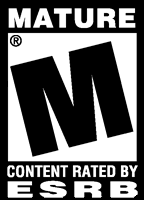 Even with all the negativity surrounding the Video Game Rating Council and its short life span, the impact it had on video games was enormous. It was the first attempt, sincere or otherwise, to visibly label games by their content, giving parents a powerful tool for ensuring that their little ones didn’t get access to inappropriate material. It put the ball back in their court, forcing parents to take a much larger role in knowing what their children were playing. Most of all, it gave the industry a legitimate line of defense from those who would place the blame for all of society’s problems on its shoulders. Today’s ESRB system is the direct descendant of Sega’s attempt, and has since played a major part in keeping the government from regulating the gaming industry. No one who enjoys games wants any censorship of any kind, and unless companies watch themselves, Congress will surely do it for them.
Even with all the negativity surrounding the Video Game Rating Council and its short life span, the impact it had on video games was enormous. It was the first attempt, sincere or otherwise, to visibly label games by their content, giving parents a powerful tool for ensuring that their little ones didn’t get access to inappropriate material. It put the ball back in their court, forcing parents to take a much larger role in knowing what their children were playing. Most of all, it gave the industry a legitimate line of defense from those who would place the blame for all of society’s problems on its shoulders. Today’s ESRB system is the direct descendant of Sega’s attempt, and has since played a major part in keeping the government from regulating the gaming industry. No one who enjoys games wants any censorship of any kind, and unless companies watch themselves, Congress will surely do it for them.
From a Sega standpoint, it’s important to note that it all began on the Genesis. Sega deserves a great deal of credit for not only starting the system, but for having the foresight to see that it would be needed. The Senate hearings of 1994 were much more subdued due to the united front gaming companies presented, as well as their legitimate plan to rate games for consumers. Ironic that it all started on a console named Genesis, no?
Sources
- Kent, Steven L. The Ultimate History of Video Games. Three Rivers Press. 2001.
- McCormick, John. Sega Night Trap Pulled from Some Stores. Newsbyte News Network. Dec. 17, 1993.
- Nichols, Peter M. A Row over Ratings. New York Times. Dec, 17, 1993.
- Ratings Guide. ESRB. 2006.
- Van Bakel, Rogier. Rating:4 Grenades. Wired Magazine. Nov. 1994.
- Video Game Ratings: What do They Mean? Microsoft.com. June 28, 2004.

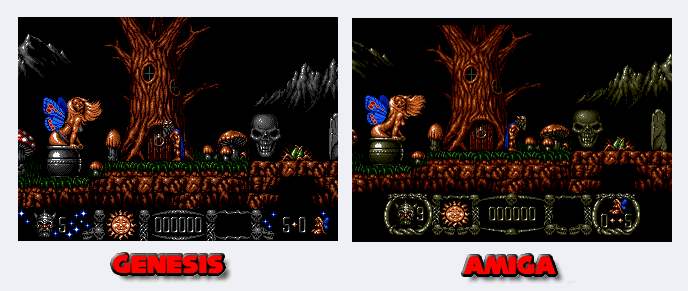

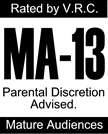
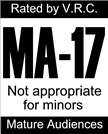
Recent Comments